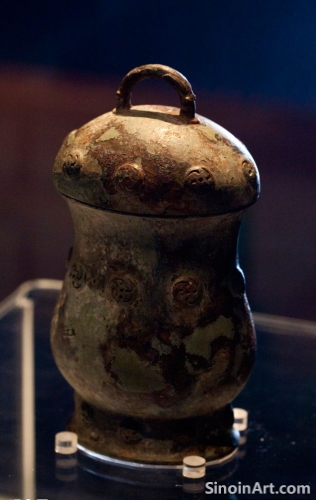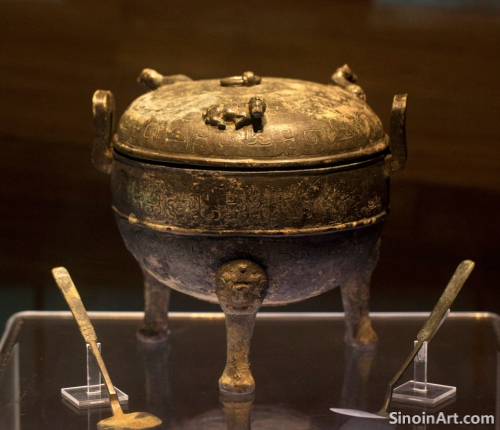Bronze Ware and the Transmission of Ancient Chinese Technical Knowledge: Tools, Techniques, and Innovation
|
The production of bronze ware in ancient China required a deep understanding of technical processes, which were passed down through generations of artisans and craftspeople, ensuring the continuity of specialized knowledge and skills. The long apprenticeship process of bronze workers helped to ensure a high level of technical knowledge and craftsmanship throughout Chinese history. The passing down of knowledge was essential to the continuation of this important artistic tradition.  The study of bronze artifacts helps to demonstrate both the complex practical knowledge needed for metalworking and also the theoretical understanding of materials science, including the properties of metals, the creation of alloys, and casting techniques. The combination of practical experience with an underlying understanding of scientific principles is a key element in the creation of these objects.  The careful maintenance of techniques, through both training and practice, helped to ensure the standardization of production, the consistent quality of the goods, and the transmission of the accumulated knowledge that was needed to create these impressive artifacts. The long apprenticeship process helped to maintain high quality standards for many years to come. The care taken to pass this knowledge to the next generation is a hallmark of the ancient Chinese tradition.  The use of these bronze objects in a variety of practical and specialized settings was an essential component in the development of technology and manufacturing in ancient China, and their creation helped to shape the knowledge and practices that were employed for hundreds of years to come. The interplay between practical application and the development of theoretical knowledge is a key component of ancient Chinese history. |
Tag : bronze technical knowledge, ancient crafts, Chinese metalworking, skill transmission, historical technology
Related information
- The Influence of Bronze Ware on the Development of Chinese Calligraphy: Forms, Styles, and Materials
- The Enduring Allure of Chinese Bronze Ware: A Source of Inspiration and Study
- The Use of Bronze in Ancient Chinese Medicine: Exploring the Relationship Between Materials and Healing
- Bronze Ware and the Development of Ancient Chinese Scientific Thought: Experimentation, Observation, and Knowledge
- The Symbolic Significance of Bronze in Ancient Chinese Power Structures: Ritual, Authority, and Legitimacy
This article explores the reciprocal influence between bronze ware and the development of Chinese calligraphy, highlighting how bronze inscriptions shaped early forms of writing, established foundational principles, and contributed to the overall evolution of calligraphic styles.
This article reflects on the enduring allure of Chinese bronze ware, highlighting its technical skill, artistic beauty, historical significance, and the importance of its study and preservation for future generations.
This article explores the use of bronze in ancient Chinese medicine, highlighting the belief that the material itself possessed healing properties, and how it was used in creating vessels for preparing remedies, and in some therapeutic practices.
This article explores how bronze ware played a role in the development of ancient Chinese scientific thought, highlighting its use in experimentation, observation, the creation of scientific instruments, and the preservation of knowledge, underscoring the connection between technology and the scientific understanding of the world.
This article explores the symbolic significance of bronze in ancient Chinese power structures, highlighting its role in ritual practices, its symbolism of authority and legitimacy, and its use by rulers to consolidate political control.